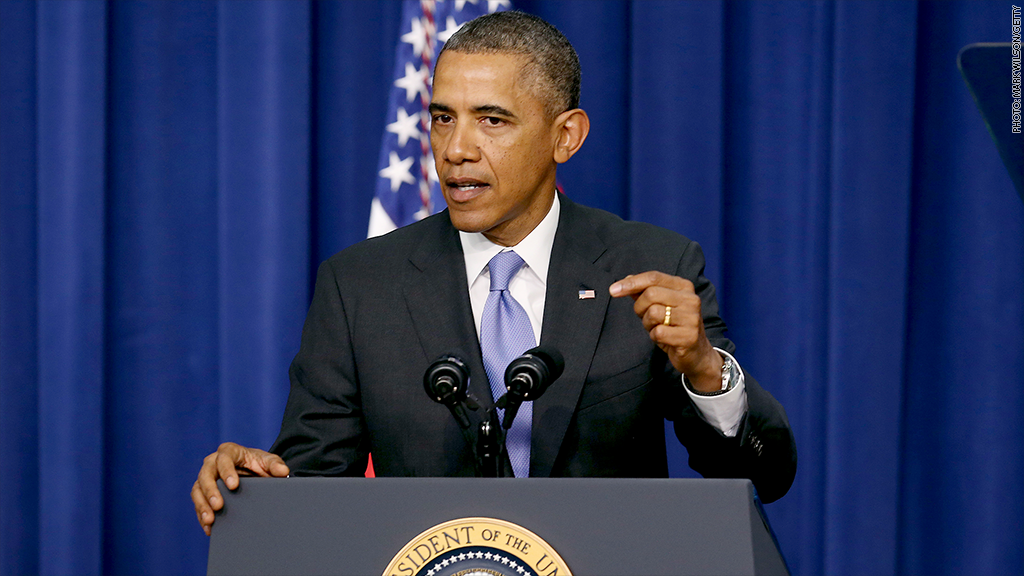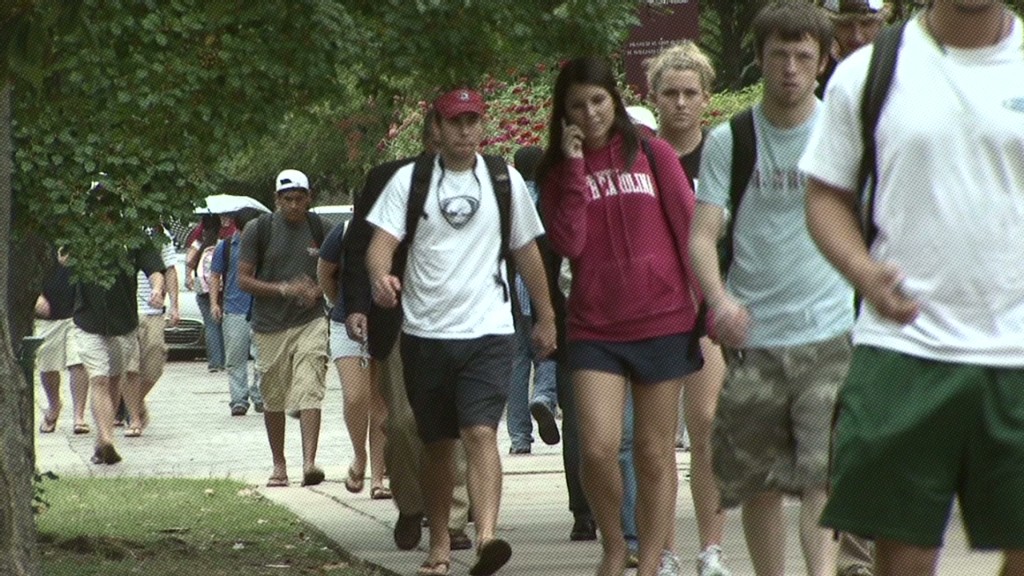
A White House push to increase the college enrollment of low-income students comes as universities and government policies are increasingly favoring high-income over low-income students.
Students from the poorest families are less than half as likely as those from the wealthiest families to get bachelor's degrees by the time they're 25, a statistic cited by the Obama administration as a reason why 140 heads of universities and advocacy groups were invited to unveil ideas aimed at increasing the number of low-income students who enroll in and graduate from college.
These include waiving the application fees, working with primary and secondary schools to better prepare them for college, providing more scholarships in science- and technology-related fields, and connecting them with adult mentors and advisors.
Related: Yale, Harvard, other colleges to court low-income students
All of these things have been proven in pilot programs to increase college attendance and graduation rates among students from the nation's poorest families.
"We don't want these to be the exceptions," President Barack Obama told the college leaders and others on Thursday. "We want these to be the rule."
However, university interests are conflicting with White House goals and the one essential incentive to get students to go to college -- money, in the form of financial aid -- has been slowly shifting to wealthier families, not low-income ones.
At the same time, more aid is going to students who don't need it: Since 1995, the percentage of students who received financial aid based on need remained flat at around 43%, while those who received aid but did not demonstrate a financial need for it has nearly doubled to 42%, according to the U.S. Department of Education.
Federal figures also show that students from families that earn at least $100,000 a year get an average of $10,200 in financial aid, significantly more than the $8,000 that goes to students from families that earn less than $20,000.
Related: 10 most expensive colleges
This is happening because colleges worried about their bottom lines are giving small amounts of financial aid to lure wealthy families that can afford to pay the rest, rather than large amounts to poor families that can't. It's also driven by annual rankings, which reward colleges for the high-school achievements of their incoming students. Since applicants from wealthier school districts with better facilities and more resources often do better on such things as entrance tests, many of them get money, even if they don't need it.
It's not only financial aid that has been moving to higher-income students. So have some federal tax breaks, including the American Opportunity Tax Credit, which Obama signed into law in 2010 and allows households earning as much as $180,000 to claim expenses paid for tuition, fees and other costs related to higher education.

That credit, and other education-related tax breaks, now account for nearly $34 billion annually, or $1 billion more than the federal government spends on Pell Grants for low-income students. And more than a third of the money goes to the wealthiest fifth of American households, according to the Center for Law and Social Policy. Fifty-seven percent of the tuition tax deduction alone goes to those families earning more than $100,000, while only 12% of families that made under $50,000 got the tax deduction.
A coalition of advocacy groups wants the income eligibility for these tax breaks lowered from $180,000 to $86,000, in order to refocus the perks on poor students. A bill to that effect has been introduced by congressmen Danny Davis, a Democrat from Illinois, and Diane Black, a Republican from Tennessee, though supporters concede the prospect it will pass is slight.
Related: Why poor kids forgo top colleges
The president previously won a victory when he convinced Congress to raise the maximum amount low-income students could receive in Pell Grants, the direct grants that can be used toward college costs without having to be paid back. Three-quarters of recipients come from families making $30,000 or less.
But Pell Grants are losing a battle with escalating college costs. Even though the taxpayer-supported program is at record funding levels, it covers only a third of the cost of attending a four-year university or college, on average -- the lowest share ever.
Another federal financial-aid program, the work-study program under which students can earn money by working on campus, is also disproportionally benefiting the rich.
Partly because the $1 billion a year in taxpayer money that goes to work-study is based on a 50-year-old formula that gives preference to high-priced private universities and colleges, nearly one work-study recipient out of four comes from a family that earns $80,000 a year or more, according to Education Department figures. That's a higher proportion than those that make less than $20,000. And fewer than half meet the federal definition of financial need.
Related: Taxpayer-funded aid program benefits richer students
Community colleges enroll 30% of all students, including many who have comparatively low incomes. But they collectively get only 16% of work-study money, according to the College Board. Fewer than 2% of community college students have work-study jobs. By comparison, private, nonprofit institutions enroll only 17% of all students but get 40% of the work-study funding.
Last summer, Obama pitched a plan that would rate colleges based on their prices, average student loan debt and graduation rates, among other measures, and dole out federal aid based on those ratings. But colleges are pushing back on this proposal, claiming it will punish the schools that serve the lowest-income students and force them to stop taking chances on those students who show promise.
"Even after all these steps that we've taken over the last five years, we still have a long way to go to unlock the doors of higher education to more Americans," Obama told the college and university presidents. "And especially lower-income Americans."
